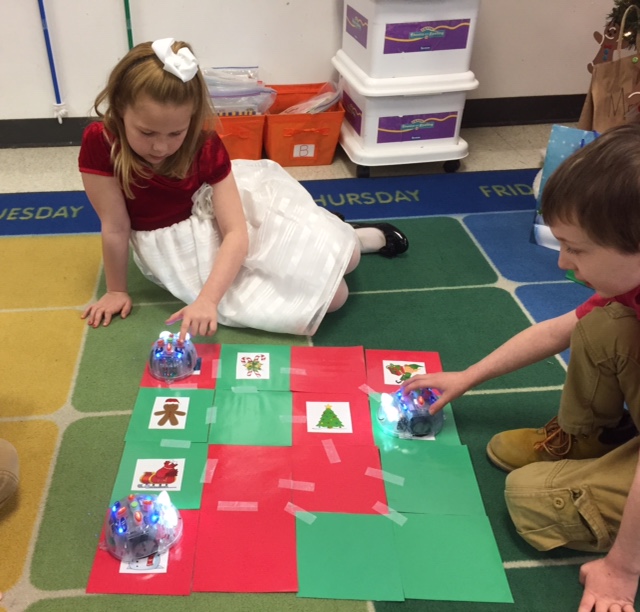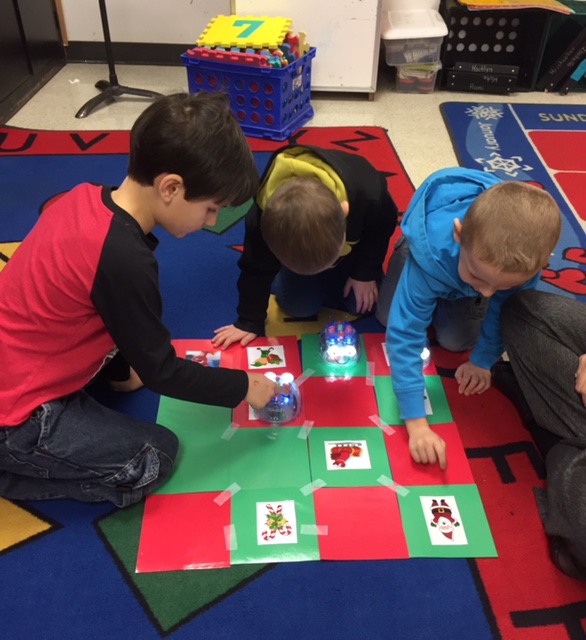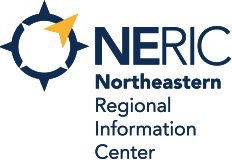Blue-Bot
1st Grade – Bethlehem
10/2016
Focus: Community building, collaboration, problem solving, coding
Class Response: The children enjoyed working with the Blue Bots very much.
Day 1
• The children talked about what they knew about robots.
• Different children took turns being a “robot” by following the commands forward, back, turn left, and turn right. The other children gave the commands, including the word “go.” The child-robot moved on a life-size grid that was 6′ X 4′. Each square was 1′ x 1′.
• The children were introduced to a Blue Bot. They learned how to handle it and how to use the buttons. Everyone got a chance to give the robot some commands.
• The children worked in teams of 3 to 5 people to move their Blue Bot from one corner of a 60″ x 40″ grid to the opposite corner. Each square was 10″ x 10″. The grid was drawn on oaktag chart paper. A rubber duck was placed in the destination corner.
• The children shared what they noticed and learned about the Blue Bots.
• They discussed what they wanted to do next with the robots. (One child suggested having the Blue Bots travel through a maze.)

Day 2
• The children talked about what they knew about mazes. They tried solving a simple 2-dimensional maze.
• The children worked in their original teams to build 3-dimensional mazes. They used cardboard tubes, egg cartons, thin cardboard boxes, and tape to build “walls” for their mazes.
• They used the Blue Bot to try to travel through their maze.
• The children shared what they noticed and learned about traveling through a maze with the Blue Bot.
Day 3
• The children discussed how they could remember the commands they used to get through their original mazes.
• Writing down the commands f, b, l, and r was introduced as a memory strategy.
• The children worked in their original teams to solve the other teams’ mazes. They wrote down the sequence of commands they used.
• The children compared the different sequences of commands they used for each of the mazes.
Advice: Introduce or review collaboration skills: deciding who goes first, taking turns, making mistakes, fixing mistakes, helping (not telling) each other, conflict resolution.
Greatest Benefit: The children have an opportunity to work on problem solving strategies with a variety of robots.
Grades 1-5, Burnt Hills-Ballston Lake
10/2016
Focus: Variety, see below
Class Response: Loved the hands on activity of coding Blue.
Grade 1: Placed decals of the planets and students had to visit planets by coding the path
Grade 2: Had robots code path of a hurricane
Grade 3: Teams stood on opposite side of grid and coded paths to the opposite team
Grades 4-5: Follow up to graph paper coding lesson
Advice: Borrowed mat – make sure the mat is always flat so it does not alter the path.
Greatest Benefit: Having a chance to try out robots before district purchases.
Grades K-1, Sharon Springs
10/2016
Focus: Math, ELA, party activity
Class Response: They loved the robots and enjoyed teaching their family at the Christmas party.
We did ELA activities- spelling, letter identification, letter sounds Math- number identification, addition facts Christmas party- find the Christmas graphics and select your grab bag present.
Advice: Modify to your grade level ahead of time by making squares 15 cm x 15 cm. Make different size grids to differentiate.
Greatest Benefit: STEAM activities and very motivational.
Video:
Blue-Bots in Elementary
Grade 1, Sharon Springs
3/2017
Focus: STEAM, Coordinate Plane, Community Mapping
Class Response: Excited! Eager to get their hands on the robots. Some students ready to attempt complex mapping by the third day.
Using buildings and landmarks from our miniature town, “Smithville”, students programmed the Blue Bots to navigate around obstacles and arrive at a predetermined destination. For example: A home, a school, and tree were placed on the grid. Students needed to navigate the Blue Bot from home to school without hitting the tree. Additional obstacles were added and more parameters were established as students became more confident programmers. For example: Leave school, stop at the store, and then go home. Do not hit the trees, bus, or deer. You must reach your destination using exactly 15 steps.
Advice: Provide access and different tasks over multiple days.
Greatest Benefit: Hands on learning, high student interest.
Kindergarten, Oppenheim-Ephratah-St. Johnsville
5/2017
Focus: All subject areas, math
Class Response: The class was totally engaged in the activity, collaborated in small groups and were able to assess what they did wrong and rethink a strategy for successfully reaching their destination.
I first used myself to demonstrate how to use the Blue Bots. I had the students direct me on my ABC carpet. They made a few mistakes and really had to think about directions and spaces to move. Then I demoed the Blue Bots. You could see the energy build in the class. They could hardy wait to do some programming. I used high frequency word cards on the mat that were placed around the mat and I placed the Blue Bots in positions that the students would have to make them turn first then go forward….etc. I would then tell them to go to a specific word on the mat. They worked in groups of 3 to make a plan. I had only 1 group out of 6 do it on the first try. The collaboration between these 5 and 6 year olds was amazing, pointing and talking through it before they pushed the button. The kids were so excited to be able to try again. It took 5 or 6 tries before all of them were able to reach their destination. And the cheers were loud and proud. The next day I had them tell me the word that they wanted to reach. They were much better, but still one group struggled to make their target. All in all a wonderful interactive tool that I could see using for a variety of lessons.
Advice: After every try, the Blue Bots had to be turned off and back on again. But no other technical issues about the performance of the Robots. (Normally you would just need to clear – we will look into this).
Greatest Benefit: Kindergarteners are very independent thinkers and workers. This gave them an opportunity to think and work together.




